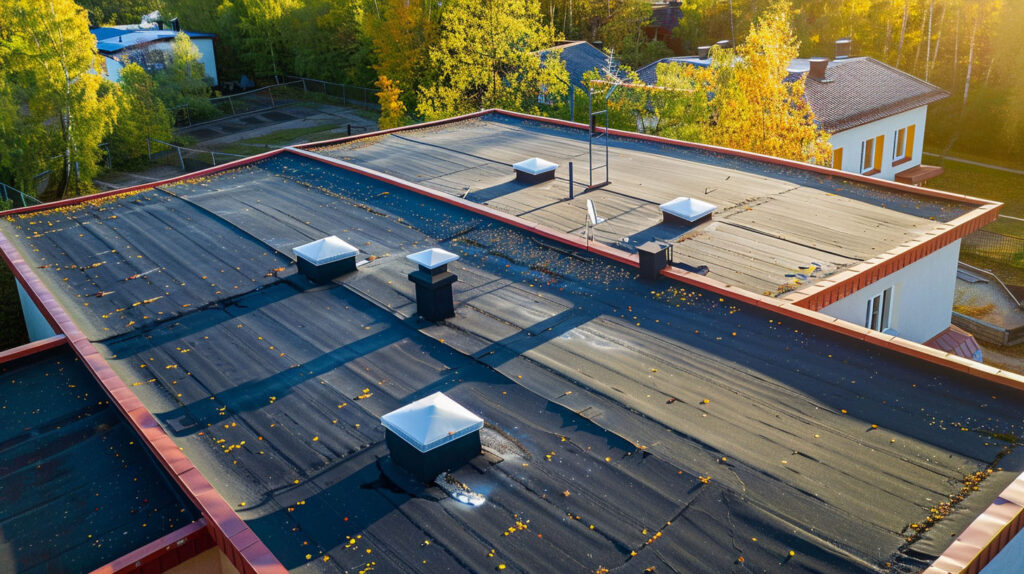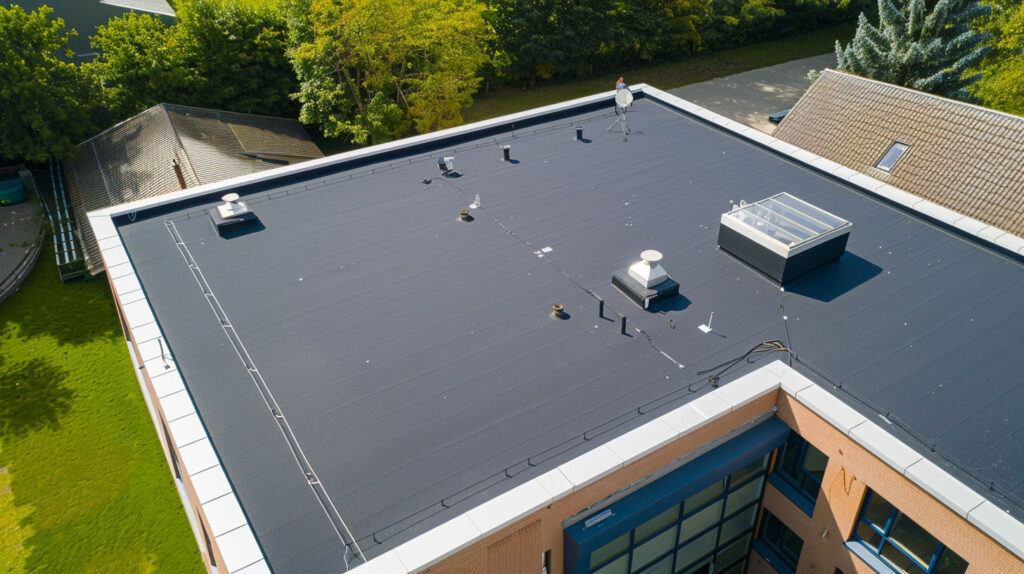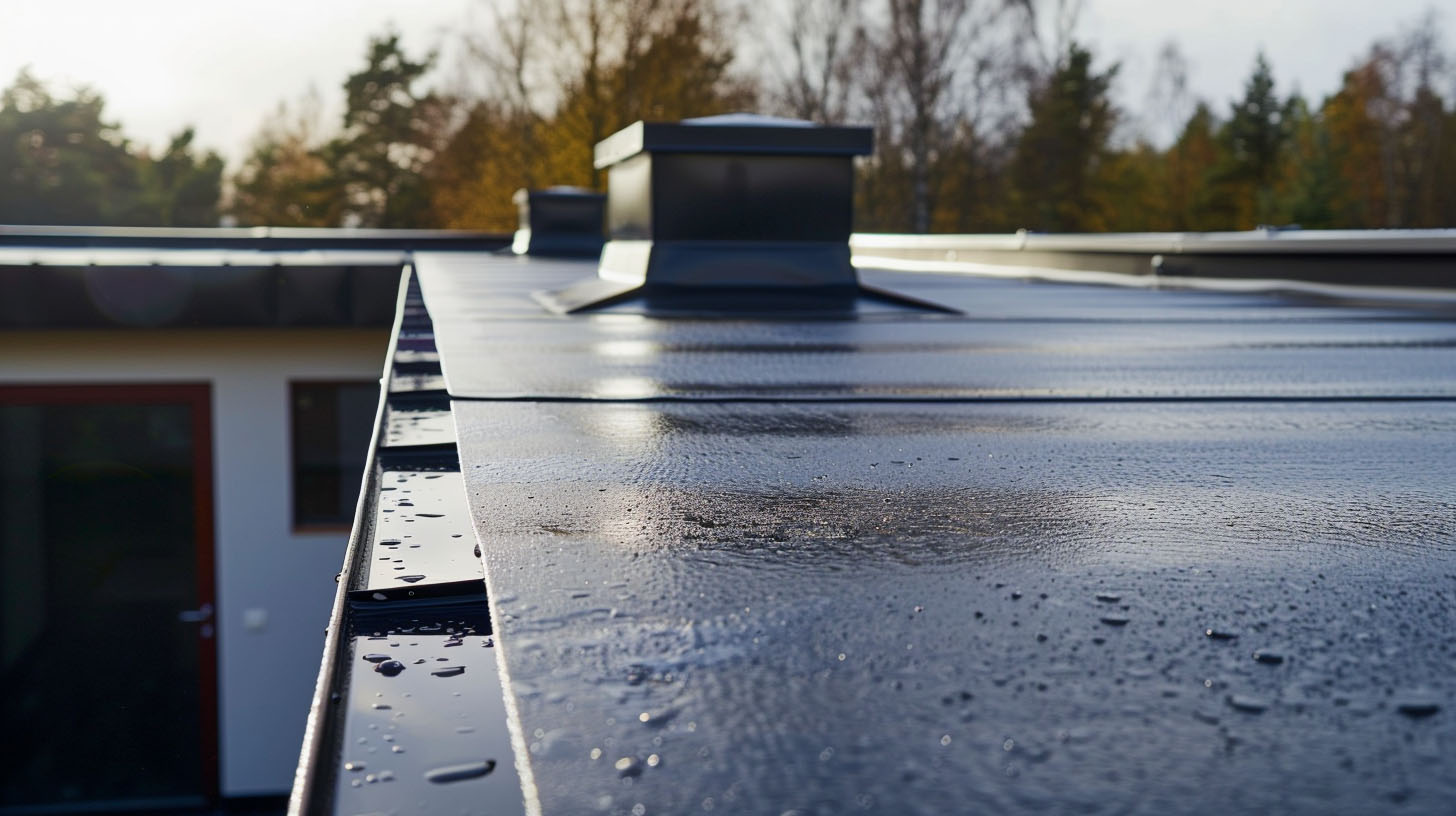Does a Flat Roof Need a Different Maintenance Plan?
A flat roof requires a maintenance plan tailored to its specific needs. Unlike pitched roofs, its design creates unique challenges that demand additional attention. At Specialist Roofing & Repair, we understand how crucial it is to protect your investment and ensure its durability, especially in Orange County’s fluctuating weather. Proper care and regular maintenance can prevent extensive damage and costly repairs over time. So let’s explore what makes flat roofs different and how you can effectively maintain them to keep them in top condition.
Understanding Flat Roofs vs. Pitched Roofs
Flat roofs and pitched roofs differ significantly in structure and functionality. A flat roof, often seen on commercial buildings, features a minimal slope of less than ten degrees. It provides space-saving benefits and a sleek appearance. However, its design makes it more vulnerable to water pooling and UV damage.
On the other hand, pitched roofs, typically found on residential properties, are characterised by their angled design. This setup allows for better water runoff, reducing the risk of structural damage. Picking the right roofing system depends on the building type and specific maintenance needs.
Key Differences in Structure and Design
Flat roofs are designed with a completely level surface that encourages water drainage towards designated areas, unlike pitched roofs that rely on angles for runoff. Their structural components, including the roof membrane and insulation, differ significantly, influencing energy efficiency and heat absorption. While flat roofing systems can support various loads, tare more susceptible to standing water and UV damage, necessitating unique maintenance strategies. Understanding these differences is crucial to ensure the longevity and effectiveness of flat roofing materials in commercial buildings.

How Flat Roofs Handle Water and Weather
Flat roofs are designed to manage water drainage efficiently, especially in regions like Orange County, CA, where rainfall patterns can vary. The integrity of the drainage system is crucial to prevent standing water and potential water damage. These roofs often utilize specialized materials, such as EPDM, to enhance their waterproofing abilities, ensuring can withstand both intense UV rays and heat absorption, which are common challenges in the area. Regular inspections help identify vulnerable areas before lead to costly repairs and structural damage.
Unique Maintenance Challenges
Another challenge lies in their exposure to UV rays and heat. Over time, UV damage can weaken the roof surface, and excessive heat absorption may impact the building’s energy efficiency. By addressing these vulnerabilities proactively, you can keep your flat roof in good condition and extend its lifespan.
Ponding Water and Drainage Issues
Standing water on a flat roof can lead to significant problems, including water damage and structural issues. Regular inspections are essential for identifying areas where water may pool, ensuring proper drainage systems are in place. Common vulnerability includes roof penetrations that may become hotspots for leaks if not properly maintained. Proactive measures, such as clearing debris and checking for signs of deterioration, can prevent costly repairs and extend the life of your flat roof. Maintaining a good drainage system is crucial for overall roof health.
Vulnerability to UV Rays and Heat Damage
Flat roofs often face significant exposure to UV rays, leading to accelerated wear and tear of roofing materials. This constant UV bombardment can cause the protective layer of the roof to deteriorate, which increases the risk of roof leaks and other potential issues. Regular flat roof maintenance, including the application of reflective coatings, can enhance UV resistance and prolong the roof’s life. Additionally, adequate insulation helps mitigate heat absorption, ultimately supporting the roof’s energy efficiency and safeguarding against further damage.
Essential Flat Roof Maintenance Tasks
Preventative care is essential for flat roof maintenance. Regular inspections, cleaning, and drainage system checks ensure your roof stays in optimal condition. These tasks save you from costly repairs while enhancing the lifespan of your roof.
Proper insulation is another vital aspect, helping to maintain energy efficiency and reduce the risk of heat loss. From checking vulnerable areas to applying innovative roof coatings, prioritising maintenance tasks ensures your flat roof remains secure and functional for years to come. Let’s explore these essential processes in detail.

Regular Inspections and What to Look For
Conducting regular inspections is crucial for maintaining the integrity of flat roofing systems. Focus on checking for ponding water, which can lead to water pooling and potential leaks. Additionally, inspect areas around roof penetrations for signs of deterioration, such as cracks or seams pulling apart. Look for vegetation growth that may compromise the roofing membrane. Addressing these minor issues in a proactive manner ensures the roof remains in good condition, extending its life and reducing the likelihood of costly repairs.
Clearing Debris and Ensuring Proper Drainage
Regular care in clearing debris is vital for flat roofing systems, as accumulated leaves, dirt, and other materials can obstruct drainage channels. This blockage leads to standing water, increasing the risk of water damage and structural deterioration. Ensuring proper drainage involves routine inspections of gutters and downspouts to prevent vegetation growth that might compromise the roof’s integrity. By proactively addressing these minor issues, homeowners can extend the life of their flat roof and mitigate the need for costly repairs down the line.
Choosing the Right Materials for Flat Roof Longevity
Selecting the best flat roofing material helps maximise durability and insulation. High-quality options like EPDM rubber or TPO offer superior performance, resisting extreme weather conditions effectively.
Proper insulation plays a key role in energy efficiency, improving the life of your flat roof. Ensuring compatibility between roofing materials and protective coatings enhances structural integrity. Partnering with trusted roofing brands like GAF or Owens Corning guarantees reliable, long-lasting solutions suited to your unique needs. For an in-depth look, let’s discuss some options available.
Best Flat Roofing Materials from Trusted Brands
Choosing quality flat roofing materials from trusted brands is crucial for enhancing the longevity and performance of your roofing system. Options like EPDM, TPO, and PVC are popular due to their excellent UV resistance and waterproofing capabilities, effectively preventing water damage and standing water. Additionally, reflective coatings improve energy efficiency by minimizing heat absorption. Selecting materials with adequate insulation further protects against potential issues such as leaks and structural damage, safeguarding your investment and extending the life of your roof.

The Role of Professional-Grade Coatings and Sealants
Coatings and sealants are critical in maintaining flat roofs and defending against extreme conditions. Roof coatings enhance waterproofing, preventing water penetration caused by pooled water.
Sealants add a layer of protection against UV damage, minimising the effects of heat absorption. Elastomeric coatings are particularly useful during Orange County’s temperature fluctuations, ensuring flexibility and protection against cracks in vulnerable areas.
Choosing professional-grade solutions ensures your roof is equipped to handle environmental stressors while remaining energy-efficient. Partner with specialists to secure durable protection for your flat roof.
Get in Touch
In summary, flat roofs present unique maintenance challenges that require a tailored approach. Regular inspections, effective drainage solutions, and the right materials are essential to prolonging the lifespan of your flat roof. Understanding how these roofs respond to local weather conditions in Orange County, CA can further enhance your maintenance strategy. By prioritizing specific tasks and utilizing professional-grade products, you can safeguard your investment and ensure optimal performance. Our commitment to excellence is reflected in our awards: Owens Corning Platinum Preferred Contractor, Polyglass Quantum Contractor, and BBB A+ Rated. If you’re ready to protect your flat roof with expert care, reach out to us at Specialist Roofing & Repair for quotes tailored to your commercial needs.

Frequently Asked Questions
How often should you do flat roof maintenance?
Flat roof maintenance should be performed twice a year or as part of a comprehensive maintenance plan. Regular care prolongs the life of your roof, and inspections for signs of damage after major weather events ensure timely repairs, saving you from further issues.
How hard is it to maintain a flat roof, and are they expensive?
Flat roof maintenance requires consistent cleaning and inspections to stay in good condition. It’s not overly difficult but does demand regular attention. When ignored, minor issues could lead to costly repairs. Affordable quality materials can help minimise long-term expenses while ensuring durability.
Read our blog: How to Prepare for a Re-Roofing Project



